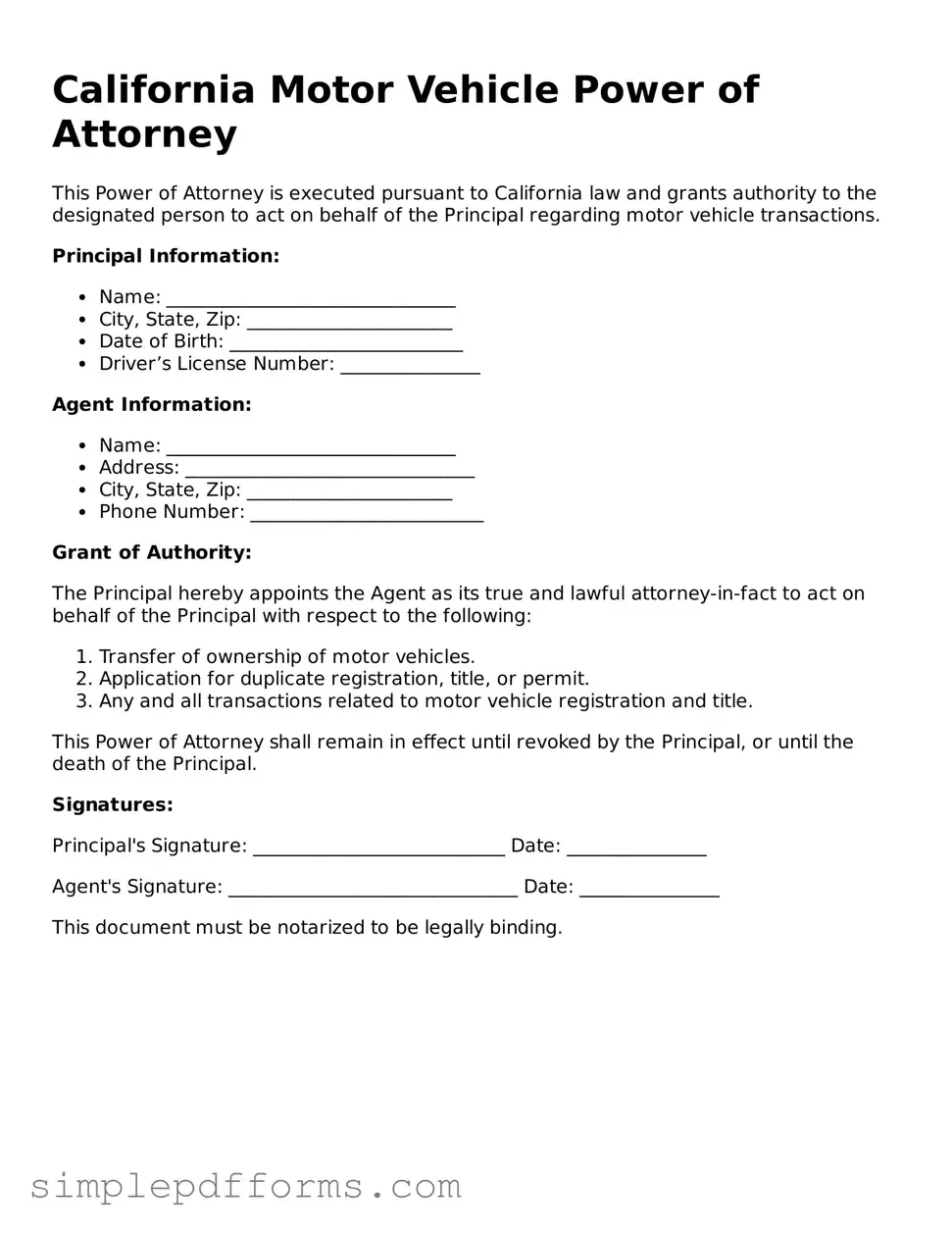Filling out the California Motor Vehicle Power of Attorney form can be a straightforward process, but many individuals make common mistakes that can lead to delays or complications. Understanding these pitfalls can help ensure that the form is completed correctly and efficiently.
One frequent mistake is failing to provide the correct vehicle information. The form requires specific details such as the vehicle identification number (VIN), make, model, and year. Omitting any of this information can render the form incomplete, leading to potential issues when trying to transfer ownership or handle vehicle-related matters.
Another common error is not signing the form properly. The person granting the power of attorney must sign the document in the designated area. If the signature is missing or does not match the name printed on the form, it could be rejected by the Department of Motor Vehicles (DMV).
People often overlook the need for a witness or notary signature. Depending on the situation, the form may require either a witness or notarization to be considered valid. Neglecting this step can create significant problems when the form is presented for processing.
Some individuals mistakenly assume that any person can be designated as an agent. While it is true that you can choose someone you trust, that person must be at least 18 years old and capable of handling the responsibilities outlined in the document. Failing to meet this requirement can lead to complications in the future.
Inaccurate dates can also cause issues. The form typically requires the date when it was signed. If this date is missing or incorrect, it may raise questions about the validity of the document and the authority of the agent.
Another error involves not providing clear instructions for the agent. The form should specify what powers are being granted. Vague language can lead to misunderstandings and disputes later on. Clearly outlining the scope of authority helps prevent confusion.
People sometimes forget to double-check their contact information. Providing an outdated or incorrect phone number or address can hinder communication between the DMV and the person granting power of attorney. This oversight can lead to delays in processing or other complications.
Failing to make copies of the completed form is another mistake. It is wise to keep a copy for personal records. This ensures that both the grantor and the agent have access to the document if needed in the future.
Lastly, individuals often neglect to review the entire form before submission. Taking a moment to read through the completed document can help catch any errors or omissions that could cause problems later. A thorough review can save time and prevent frustration.
By being aware of these common mistakes, individuals can fill out the California Motor Vehicle Power of Attorney form with greater confidence and accuracy, ensuring a smoother process when dealing with vehicle matters.
